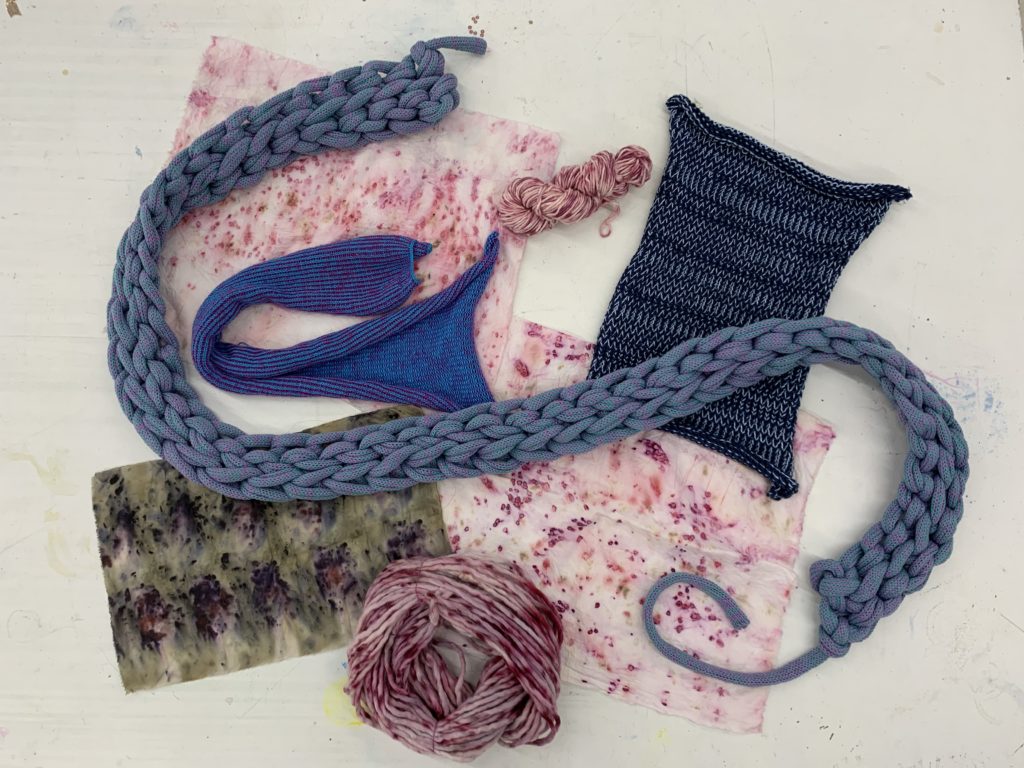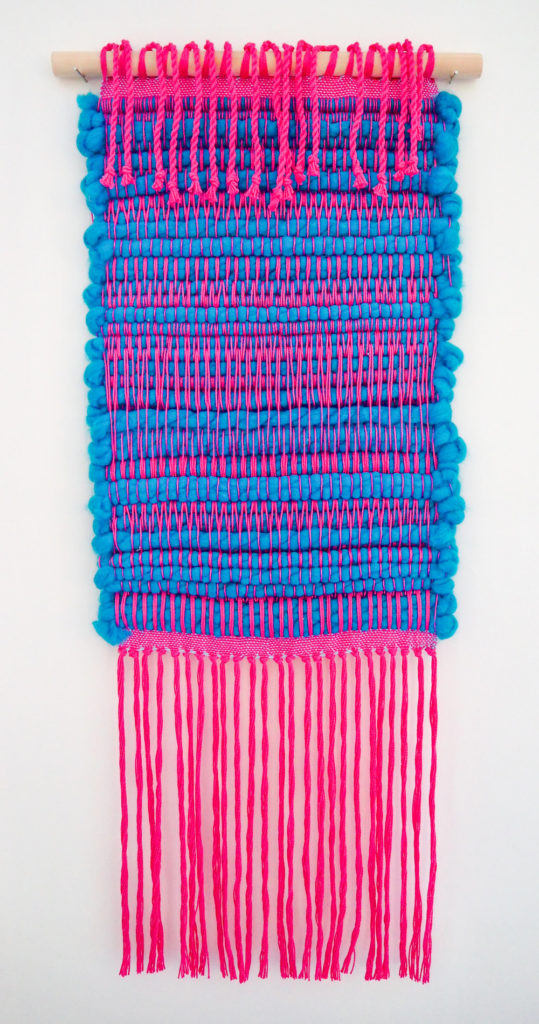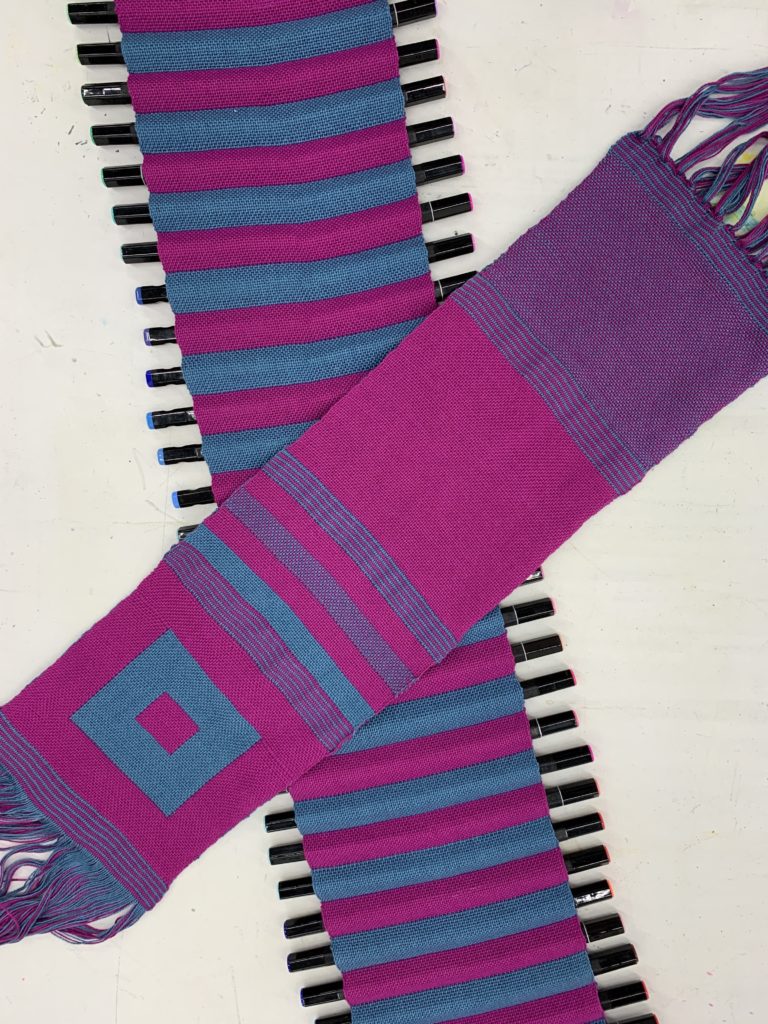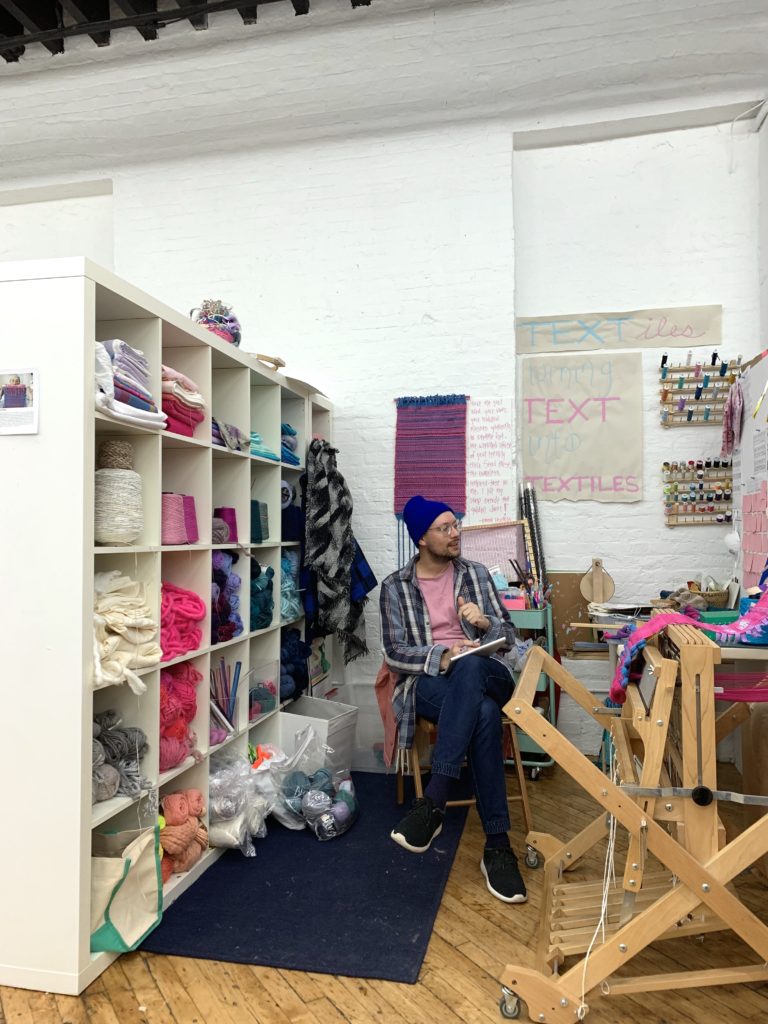AIR Artist Highlight: Anthony Shimek
Anthony Shimek was contemplating grad schools and even applied and was accepted to several. But the lure of the Textile Arts Center artist-in-residence program was stronger.
“When I compared the curriculum, it just seemed like the best value and fit,” he said in a Zoom interview with me in August. We were both in our Brooklyn apartments, in this world turned seemingly upside-down by COVID-19.
TAC attracted him because of the mix of hands-on exploration and instruction, as well as exposure to history and writing relevant to the artist’s life. One of the deciding factors for accepting the TAC AIR offer over any of the grad school ones was Anthony’s desire to, as he puts it, continue walking the line between fine art and craft/design.

“I don’t have a traditional fine art background,” he said, but what he did have was a small business background. Since 2014, he has been running By Tonz, a one-man textile company specializing in playful pieces that incorporate text. Aquas and pinks figure prominently in his handmade pieces, but he also takes commissions that speak to clients’ individual tastes and honor words that are meaningful to them.
On his website, Anthony describes his process as such:
“I created a process of translating text into weavings by assigning threads on the loom to letters. Each horizontal line of yarn in the weaving is one translated letter. Lines are woven are words are spelled: letter by letter, and so the text creates patterns entirely unique to that phrase, poem, or lyric. When the piece is finished, the text is spelled out letter by letter (line of yarn by line of yarn) from the top of the piece to the bottom.”
“Lines are woven are words are spelled: letter by letter, and so the text creates patterns entirely unique to that phrase, poem, or lyric.”

Influenced by his female relatives, Anthony gravitated toward textiles and crafts more generally at an early age. His mother, a grade school teacher’s assistant, regularly made crafts as gifts for her students, especially around the holidays. Meanwhile, his aunt, who lived nearby where he grew up in Wisconsin, was a seamstress and had a sewing room that filled young Anthony with wonder. His mother and aunt took turns making fabulous Halloween costumes for him. He recalls obsessing over the puffiness over his Cat in the Hat costume’s bowtie or the sheer delight he took in wearing a homemade penguin costume. Meanwhile, his grandmother’s handiwork adorned his childhood home, and continues to inspire Anthony today. Though he regrets not learning how to knit or crochet from his grandmother, who died when he was still little, Anthony is happy his mother taught him to sew.
Textiles became a lifelong fascination that Anthony never lost even while working full-time in the non-profit sector for LGBTQ organizations. His bedroom became his studio and he ran By Tonz from home. He took low-key workshops at New York spaces, including TAC, in the evenings as his work schedule allowed.

The TAC AIR program allowed Anthony to pursue his practice more in depth while still maintaining a sense of play.
“The formal requirements of an academic program didn’t apply here—participation is driven by your own goals,” he said, explaining that TAC AIR is not a degree program. The focus is on developing your creative practice, which means different things for different makers.
“The formal requirements of an academic program didn’t apply here—participation is driven by your own goals.”
Having access to the facilities and a community of artists and designers were, for him, the highlight of the experience. This was the case even and especially during quarantine, when he began by working exclusively at home and eventually transitioning back to the studio—which is a large space that allows for social distancing—as time permitted.

“After all the years of using my apartment as a studio, I found it very difficult to be creative in my home space these days. I think it particularly in this context, there was so much going on, that my focus really started to drift.”
Anthony noted that one of the other strengths of the residency is the varied background of the residents. While most of his cohort came from a fine arts program, everyone was at their own unique point in their career and practice. Because of this, he received feedback in critique and support in studio time he never would have expected.
During the early part of 2020, Anthony had begun developing a project called “Collective Joy” for the AIR group exhibition, now tentatively scheduled to take place this fall. He said, “I have decided not to show in the final group exhibition, but hope to revisit and show an iteration of my project ‘Collective Joy’ at TAC in the future.”
“I’m still at the same place in my practice in terms of toeing the line between fine art and craft/design, but with a greater sense of perspective.”
Now that the residency has come to an end, Anthony said, “I’m still at the same place in my practice in terms of toeing the line between fine art and craft/design, but with a greater sense of perspective.”
Anthony's work was featured in the Subtle Speaks, TAC AIR 11 Final Exhibition (September 19-28, 2020). Check the online exhibition to see more from this artist.